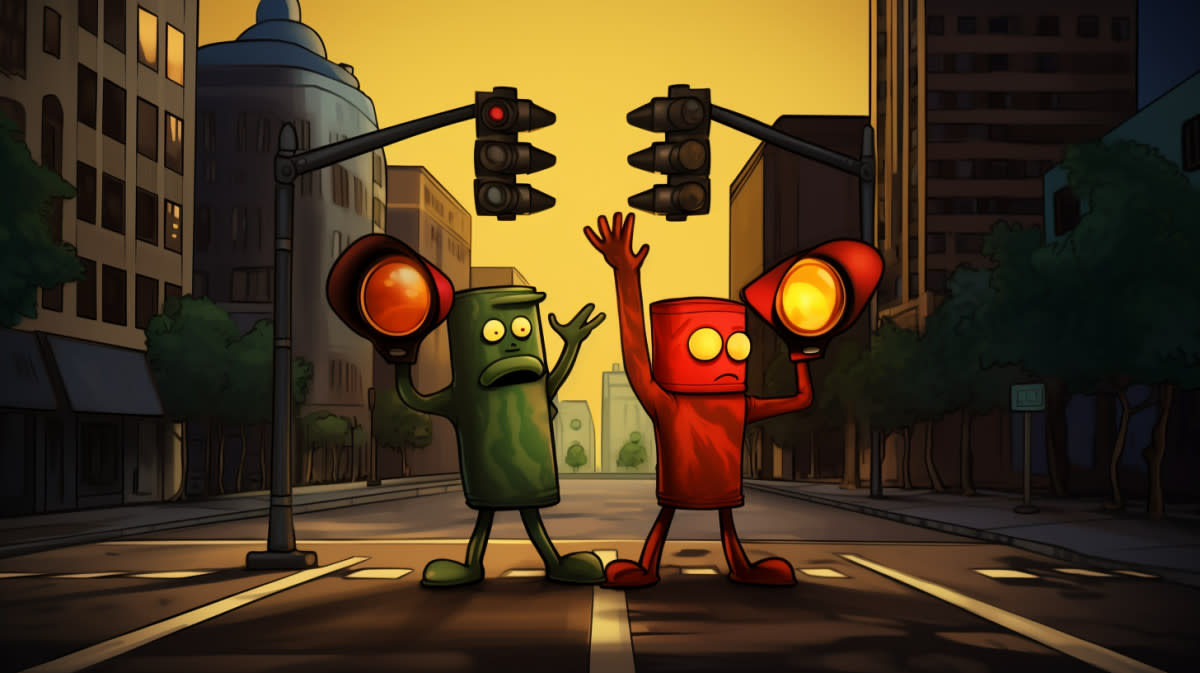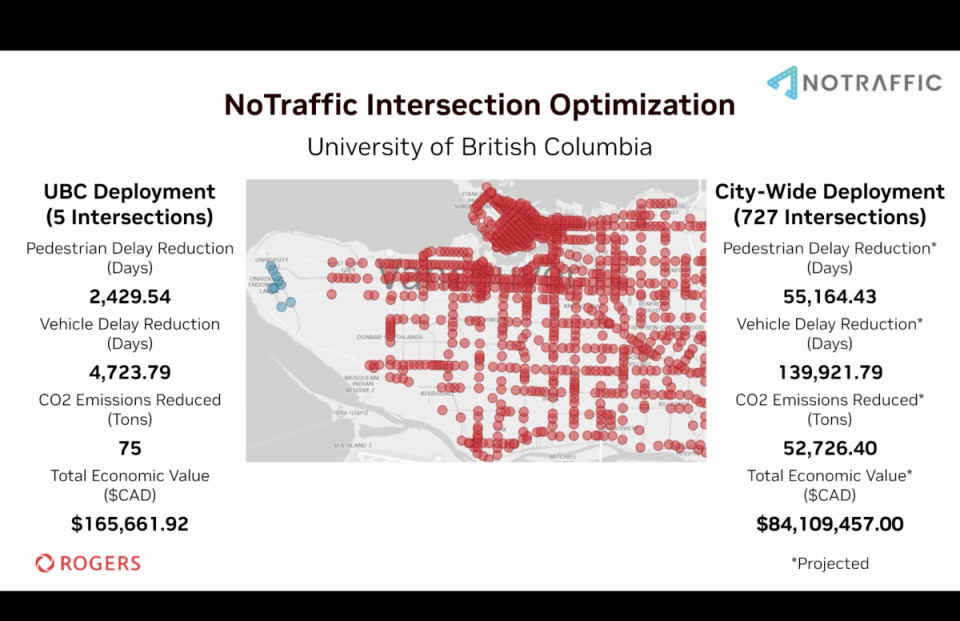Israeli-based NoTraffic partners with tech giant Nvidia on AI-driven mobility and traffic solutions

Bruno Long/Midjourney
Imagine a time in the future when you are cruising through traffic on your electric bike or vehicle and you are approaching a busy intersection. the light is green ahead of you and the flow of traffic is moving along nicely. As you blend in with all the other moving parts of this organized chaos, your mind wanders ever so slightly to the evening dinner plans, what time you need to pick up the kids after soccer practice, or maybe that meeting you have first thing tomorrow morning.
Suddenly, you are snapped out of your trace by a notification on your bike or vehicle screen about an impending accident at the intersection. You slow down immediately and a car speeds through the intersection, running a red light that almost certainly would have caused a major accident. The ability to predict accidents before they happen, along with many other AI-driven traffic improvements, is what Israeli-based NoTraffic and tech giant Nvidia aim to implement into an outdated traffic system. The future, it seems, is right now.
What is NoTraffic?
NoTraffic was founded in 2017 by Tal Kreisler, Uriel Katz and Or Sela, based in Tel Aviv, Israel. The company has become the pioneering IoT Platform for Urban Mobility, spearheading a global mission to revolutionize urban transportation. They were named one of Time's 'Most Influential Companies' in 2022. With a cutting-edge blend of computer vision, cloud computing, V2X connectivity, and AI technologies, the NoTraffic Platform is at the forefront of transforming traditional infrastructure to meet the demands of modern urban landscapes. As the leader in its field, NoTraffic is dedicated to laying the digital groundwork necessary to enhance mobility and efficiency on a global scale.
The problem with traffic intersections
Since the invention of the traffic light in London in 1868 (yes, 1868!), intersections have changed and morphed into the busy, sometimes confusing, oftentimes frustrating, stop lights that we know today. But the infrastructure surrounding the modern traffic intersection hasn't changed much over the past few decades. More specifically, I am talking about fixed timing plans.
Fixed timing plans follow a predetermined sequence of signal operation, always providing the same amount of time to each traffic movement, whether traffic is present or not. They often change depending on the time of day or peak hours that are determined based on existing traffic data. Around 99% of existing signalized intersections are still running on fixed timing plans, which are rigid and don't take into account real-time data that is already found on mapping apps on our phones.
Related: New California Law Helps Make Changes to Cycling Infrastructure
How NoTraffic uses real-time data and AI
By easily installing their proprietary technology into existing intersections (they claim to be up and running in 2 hours), the AI sensors take in and compute all of the incoming data from an intersection and process it in real time, allowing cities to manage and customize their traffic patterns while the information is also autonomously sent back to users who are connected to the system in their vehicle, e-bike, moped or scooter.
The algorithm runs thousands of scenarios and outcomes, predicting the most efficient routes, traffic light timing, emergency vehicle notifications and predictive accident avoidance. Imagine having all of this information streamed to you in real time, allowing you to make the most efficient commuting decisions at a moment's notice. This could alleviate long waits in traffic, knowing what streets to avoid for an accident that just happened, or help you avoid accidents that you didn't even know were about to happen.
Nvidia, NoTraffic and Rogers Communications partner on University of British Columbia study
While there are already a handful of cities in states such as Ohio, Arizona and California using the technology, a recent study at the University of British Columbia in Vancouver, Canada, has given even more data to back up the claims behind the science from NoTraffic. What is different this time around is that mega-tech corporation Nvidia is partnering with NoTraffic, as well as Canada's leading telecommunications company Rogers. This limited area study was performed at the UBC campus in Vancouver, where the data was collected and processed to figure out how much more efficient the NoTraffic system is compared to older traffic systems. Using a combination of AI and 5G technology, the information collected and the results outlined in a keynote event, are hard to argue with.

Nvidia/Rogers/NoTraffic
Concerns over data collection and surveillance
Of course, there are some major reservations when it comes to using any sort of advanced technology or AI when it comes to privacy and data collection. Stories that continually come out of China claiming that it is using data from CCTV cameras, 5G towers and AI-driven data, to turn the country into a surveilled state akin to George Orwell's 1984 book, can often put into question any new technology that gets introduced. However, NoTraffic claims that all of its data is anonymized, meaning that any identifiers, private or sensitive information is removed or encrypted, protecting your data and privacy while the system continues to provide helpful information.
For more information on this topic and to learn more about these systems, check out:

